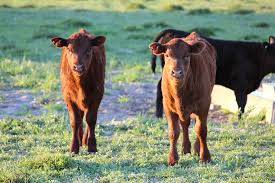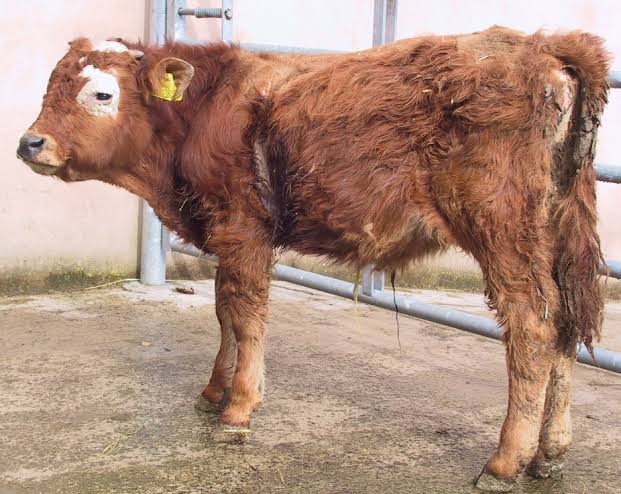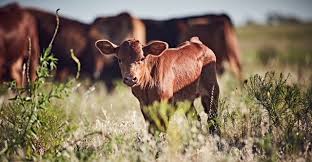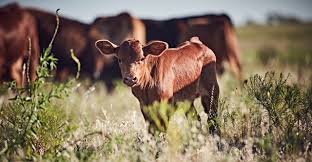Bovine Viral Diarrhea (BVD), scientifically known as Pestivirus Bovis, is a contagious viral infection that affects cattle worldwide. This disease primarily targets the respiratory and digestive systems of cattle, causing a range of symptoms and economic losses for the livestock industry.
The virus responsible for Bovine Viral Diarrhea belongs to the Pestivirus genus, and it has two distinct biotypes: cytopathic (CP) and non-cytopathic (NCP). These biotypes can result in different clinical manifestations, with the non-cytopathic form being more common but potentially leading to persistent infections.
Cattle infected with BVD may exhibit various signs, including fever, lethargy, nasal discharge, and, as the name suggests, diarrhea. The severity of the disease can vary, and in some cases, infected cattle may not show any apparent symptoms. This variability poses a challenge in diagnosing and controlling BVD.
Transmission of BVD occurs through direct or indirect contact with infected animals. The virus can spread through respiratory secretions, saliva, urine, and feces. Calves born to persistently infected cows can also carry the virus, contributing to the persistence of BVD within herds.
Preventing the spread of Bovine Viral Diarrhea involves implementing biosecurity measures, such as isolating infected animals and ensuring proper hygiene practices on farms. Additionally, vaccination plays a crucial role in managing the disease, although its effectiveness can be influenced by factors such as the strain of the virus and the animal’s immune status.
BVD has significant economic implications for the cattle industry. The disease can lead to reduced milk production, weight loss, and decreased reproductive performance. Moreover, persistently infected animals serve as a continuous source of the virus, perpetuating the cycle of infection within herds.
Bovine Viral Diarrhea, caused by Pestivirus Bovis, poses a considerable threat to the global cattle industry. Understanding the modes of transmission, clinical manifestations, and preventive measures is essential for effective management. Through diligent biosecurity practices and vaccination strategies, farmers can mitigate the impact of BVD, safeguarding the health and productivity of their cattle herds.
Read Also: How to Extract and Package Snail Slime (Snail filtrate) for Commercial Use
Animals Affected by Bovine Viral Diarrhea (Pestivirus Bovis)

Bovine Viral Diarrhea (BVD) primarily affects cattle, both domestic and wild. The susceptibility to the virus extends to various breeds and age groups within the bovine species. In particular:
1. Cattle: BVD can infect both beef and dairy cattle, impacting animals of all ages. Calves are particularly vulnerable, and infections in pregnant cows can result in congenital defects or persistently infected calves.
2. Wildlife: While the primary reservoir for BVD is domestic cattle, the virus can also affect certain wildlife species. Infections have been documented in deer, bison, and other cloven-hoofed mammals, contributing to the complexity of disease control in regions where domestic and wild populations coexist.
It’s important to note that other species, such as sheep and goats, can be infected with related pestiviruses (e.g., Border Disease Virus), but they are not typically affected by BVD in the same way as cattle.
The broad susceptibility of cattle to BVD makes it a significant concern for livestock industries globally. Effective management and control strategies involve a combination of vaccination, biosecurity measures, and monitoring to minimize the impact of the virus on both domestic and, to some extent, wild populations.
Damages Caused by Bovine Viral Diarrhea

Bovine Viral Diarrhea (BVD) inflicts various damages on cattle herds, resulting in economic losses and challenges for livestock producers. The damages caused by BVD include:
1. Reduced Reproductive Performance: BVD can lead to reproductive issues in cattle. In pregnant cows, the virus may cause embryonic death, fetal malformations, or the birth of persistently infected calves. This can result in decreased reproductive efficiency and increased culling rates.
2. Negative Impact on Fertility: BVD infections, especially in bulls, can affect sperm quality and reduce fertility. Bulls exposed to the virus may experience decreased semen quality, leading to lower conception rates in breeding programs.
3. Decreased Milk Production: Infected dairy cows often exhibit reduced milk production due to the general impact of the virus on their health. This decline in milk yield contributes to economic losses for dairy farmers.
4. Weight Loss and Poor Growth: BVD-infected cattle, particularly calves, may experience weight loss and stunted growth. This not only affects the overall health and well-being of the animals but also results in economic losses for beef producers due to reduced marketable weights.
5. Increased Susceptibility to Other Diseases: BVD weakens the immune system of affected cattle, making them more susceptible to secondary infections. This can lead to additional veterinary and medical expenses for farmers, as well as increased use of antibiotics.
6. Persistently Infected (PI) Animals: Calves born persistently infected with BVD become lifelong carriers of the virus. These animals shed the virus continuously, serving as a source of infection for the rest of the herd. Identifying and managing PI animals is crucial for preventing the spread of BVD.
7. Impact on Herd Morale and Productivity: The overall stress and health challenges posed by BVD can have an emotional and psychological impact on livestock producers. Managing a herd affected by BVD requires significant effort, time, and resources, affecting the overall productivity and morale of the farming operation.
The damages caused by Bovine Viral Diarrhea extend beyond immediate health concerns. The economic repercussions, including reduced reproductive success, lower milk production, and compromised growth, highlight the importance of implementing effective control and prevention measures within cattle herds.
Read Also: Slugs and Snails: Description, Damages Caused, Control and Preventive Measures
Control and Preventive Measures

Effective control and preventive measures are crucial to managing and mitigating the impact of Bovine Viral Diarrhea (BVD) in cattle herds. Here are key strategies:
1. Vaccination Programs: Implementing a comprehensive vaccination program is essential. Vaccines are available to prevent BVD infections and reduce the severity of clinical signs. Proper timing and administration of vaccines, especially in pregnant cows, help protect against congenital infections and minimize the risk of persistently infected calves.
2. Biosecurity Practices: Strict biosecurity measures are vital to prevent the introduction and spread of BVD within and between herds. This includes isolating new animals before introducing them to the herd, avoiding contact with neighboring cattle, and maintaining hygiene practices to minimize the risk of transmission via contaminated equipment or personnel.
3. Testing and Surveillance: Regular testing and surveillance help identify and isolate persistently infected (PI) animals. Early detection allows for timely culling or segregation of PI animals to prevent further spread of the virus within the herd.
4. Herd Monitoring: Regular monitoring of the herd’s health, reproductive performance, and growth rates can provide early indicators of potential BVD outbreaks. Timely veterinary intervention based on these observations can help prevent the escalation of the disease.
5. Quarantine and Isolation: Isolate animals showing clinical signs of BVD to prevent the spread of the virus within the herd. Additionally, quarantine newly introduced animals for a period to monitor their health status before integrating them with the rest of the herd.
6. Control of Insect Vectors: BVD can be transmitted through blood-feeding insects. Implementing measures to control vectors such as mosquitoes and biting flies can help reduce the risk of transmission.
7. Education and Training: Educate farm personnel about the importance of BVD prevention and control measures. Training on proper biosecurity practices, recognizing clinical signs, and understanding vaccination protocols contributes to the overall success of disease management.
8. Genetic Selection: Consider incorporating BVD-resistant genetics into breeding programs. This can be achieved by selecting bulls and replacement heifers from BVD-free herds or using genetic testing to identify animals with increased resistance to the virus.
9. Culling Strategies: Identify and remove persistently infected (PI) animals promptly. Culling is an essential strategy to prevent these individuals from perpetuating the virus within the herd.
By combining these measures, farmers can establish a comprehensive approach to controlling and preventing Bovine Viral Diarrhea, safeguarding the health and productivity of their cattle herds.
Frequently Asked Questions (FAQs) About Bovine Viral Diarrhea (Pestivirus Bovis)
1. Q: What is Bovine Viral Diarrhea (BVD)?
A: Bovine Viral Diarrhea, or BVD, is a contagious viral infection affecting cattle worldwide. It primarily targets the respiratory and digestive systems, causing a range of symptoms.
2. Q: What are the common symptoms of BVD in cattle?
A: Symptoms include fever, lethargy, nasal discharge, diarrhea (as the name suggests), reduced milk production, weight loss, and reproductive issues.
3. Q: How is BVD transmitted?
A: BVD can spread through direct or indirect contact with infected animals. Transmission occurs via respiratory secretions, saliva, urine, and feces. Calves born to persistently infected cows can also carry the virus.
4. Q: Can other animals, besides cattle, get infected with BVD?
A: While BVD primarily affects cattle, certain wildlife species like deer and bison can also be infected. Other domestic species like sheep and goats may contract related pestiviruses but not typically BVD.
5. Q: How is BVD diagnosed?
A: Diagnosis involves laboratory tests, such as virus detection or antibody assays. Identifying persistently infected (PI) animals is crucial for disease control.
6. Q: What is the economic impact of BVD on cattle herds?
A: BVD can result in reduced reproductive performance, negative effects on fertility, decreased milk production, weight loss, and increased susceptibility to other diseases, leading to significant economic losses for livestock producers.
7. Q: How can BVD be prevented?
A: Prevention involves vaccination programs, strict biosecurity practices, regular testing and surveillance, quarantine and isolation of sick or newly introduced animals, control of insect vectors, education, and culling strategies.
8. Q: Are there vaccines available for BVD?
A: Yes, vaccines are available to prevent BVD infections and reduce the severity of clinical signs. Proper vaccination timing, especially in pregnant cows, is crucial for effective disease prevention.
9. Q: What is the role of persistently infected (PI) animals in BVD transmission?
A: PI animals continuously shed the virus, serving as a source of infection for the herd. Identifying and promptly culling or isolating PI animals is crucial for preventing the spread of BVD.
10. Q: Can BVD be eradicated from a herd once it’s introduced?
A: With proper management practices, including testing, vaccination, biosecurity, and culling strategies, it is possible to control and even eliminate BVD from a herd over time. Regular monitoring and adherence to preventive measures are key.
Read Also: Best Organic Fertilizer for Vegetables

